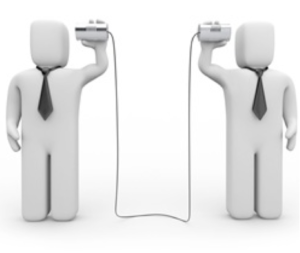Is Your Business Telling You It Needs A Break?

 We must listen to the signals our business is sending us. Organizations get tired and need rest cycles too. Not quite the same as we humans need rest, but instead, organizations cannot endlessly expend energy without replacing it along the way. Like humans, businesses need cycles of work and then rejuvenation. Constant full-speed acceleration, without maintaining the organizational pistons, will wear out the engine and momentum will slow. This means that balance is needed between the need to constantly move the organization forward and the need to recharge energy and celebrate successes along the way.
We must listen to the signals our business is sending us. Organizations get tired and need rest cycles too. Not quite the same as we humans need rest, but instead, organizations cannot endlessly expend energy without replacing it along the way. Like humans, businesses need cycles of work and then rejuvenation. Constant full-speed acceleration, without maintaining the organizational pistons, will wear out the engine and momentum will slow. This means that balance is needed between the need to constantly move the organization forward and the need to recharge energy and celebrate successes along the way.
The relentless charge creates fatigue and burnout within the organization and can lead to an exhausted and ambivalent workforce that is detrimental to growth, innovation and operational excellence of our business. That does not mean that we cannot push or should coast along and slack-off in regards to advancing the betterment of our businesses. However, it does mean that we have to have a formula mixed correctly in order to fuel our business for the long-run. We need to think in terms of running a marathon and not a sprint. Given that, the formula must be calibrated our culture and it must also be attenuated to our business strategy and goals.
This may all sound a bit warm and fuzzy in our hard-driving business environments, but even in the engineering world of thermodynamics, this property is acknowledged as an important consideration. Entropy is a property that can be used to determine the energy available for useful work in a thermodynamic process, such as in energy conversion devices, engines, or machines. Such devices can only be driven by convertible energy, and have a theoretical maximum efficiency when converting energy to work. During this work, entropy accumulates in the system, which then dissipates in the form of waste heat.
So how can this engineering principle be applied in business? There are several ways in fact.
Channel Focused Energy To Avoid Waste
We must focus the uses of energy. In the psychological world, ADD (attention deficit disorder) is diagnosed when an individual meets certain criteria for hyperactivity, impulsivity, or inattention. Likewise, in the corporate world, organizations can exhibit ADD-like behavior when they mistake activity for effectiveness; when they lose focus on established objectives; and when they respond haphazardly to environmental changes.
Many well-meaning managers and leaders assume that because members of the organization are “active” that they are also “effective.” In reality, activity does not equal effectiveness; and it’s not representative of indispensability. Rather, effectiveness is the result of “doing the right things, right”. And the right things are those activities and actions that make organizational goals a reality.
Ensure You Have The Right Type Of Energy
A 2003 MIT Sloan study identified four corporate energy zones that can either stimulate or handicap competitiveness. This in-depth study proved that organizational energy and focus is a critical component to success.
Some key points that arose from the MIT study are worth considering:
- After more than 50 years of largely ignoring soft factors, like emotions and feelings, organizations are recognizing the powerful role that emotions play in shaping corporate behavior.
- Corporate leaders are responsible for unleashing organizational energy and guiding it toward key strategic goals.
- Organizational energy is the combination of the company’s emotional, cognitive, and physical states. While difficult to measure, organizational energy is evident in the intensity, endurance, and innovation processes of a company’s work.
- Individual energy, especially of leaders, influences organizational energy. Likewise, the energy state of the organization affects the energy of individuals.
It is the intersection of intensity and quality that determines an organization’s energy state, which usually falls into one of four categories – “The Four Energy Zones”:
- Aggression zone (responding to threat)
- Passion zone (responding to an exciting goal)
- Comfort zone (coasting dangerously on past success)
- Resignation zone (has nearly given up)
Expend It Wisely, Then Replenish Energy and Renew Excitement
Renewal of organizational energy comes from celebrating the achievement of milestones, then refocusing energy again on the next milestone. Therefore, milestones must be defined in order to be recognized when they are met and rewarded if they are accomplished according to performance acceptance criteria. Large strategic objectives can be broken down into many milestones, so there should never be a problem of advancing the business goals through milestone cycles of hard work and real celebration.
Category: Business Growth & Strategy
Tags: CEO, Energy, Executive, Leadership, Management, Strategy

